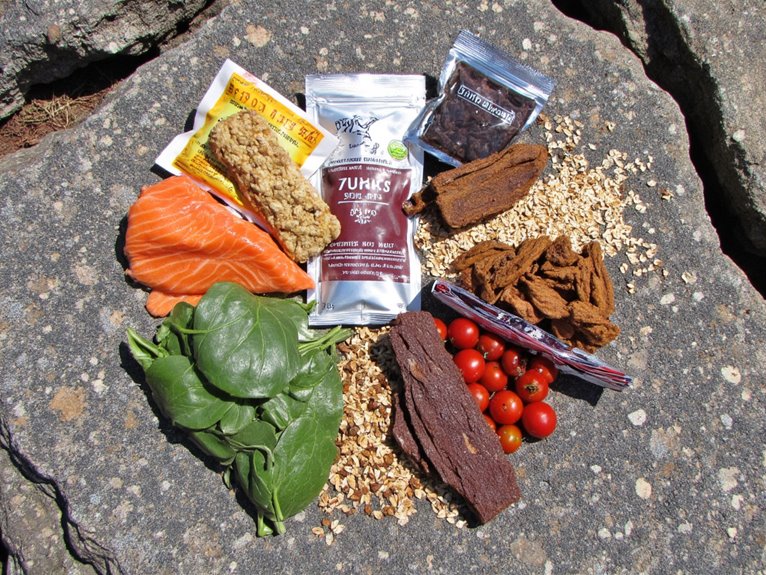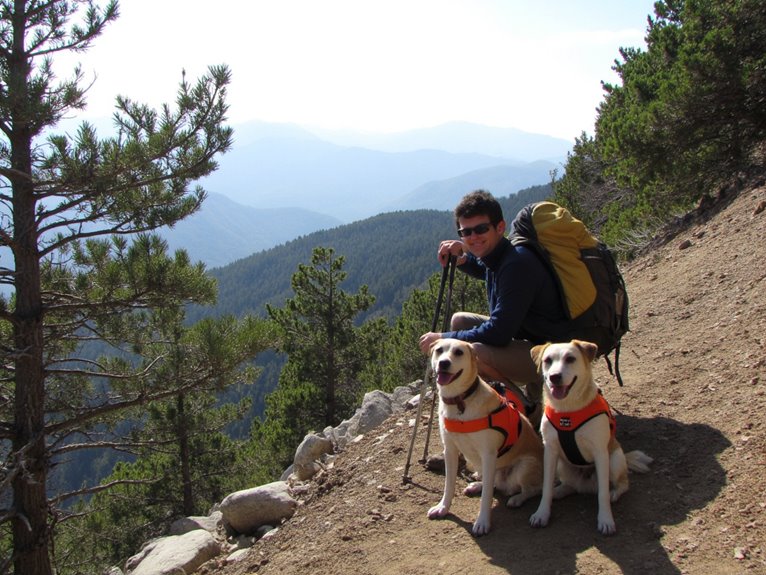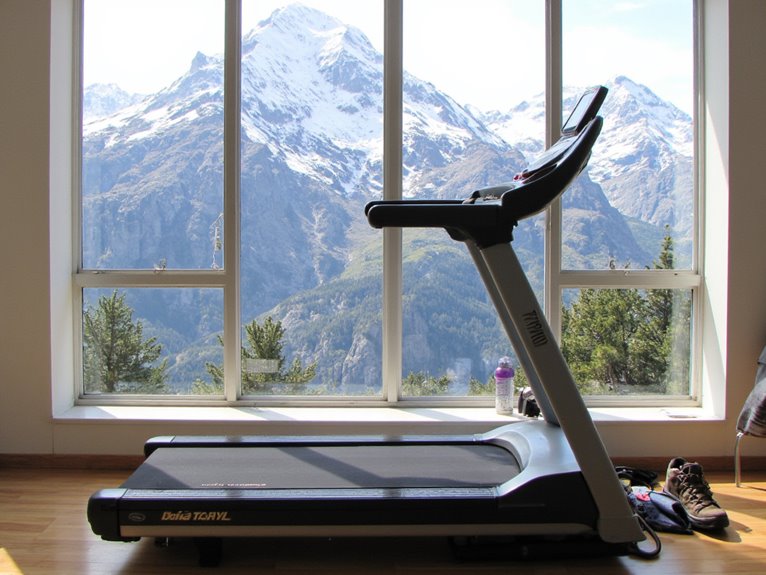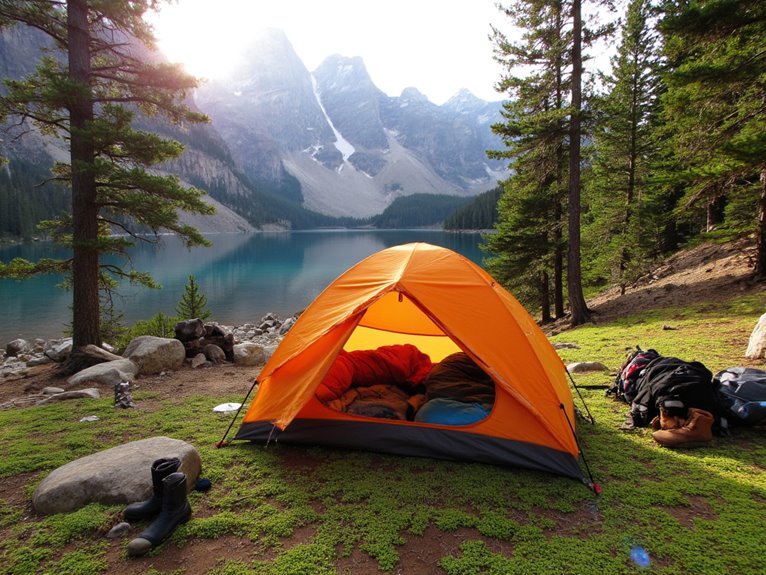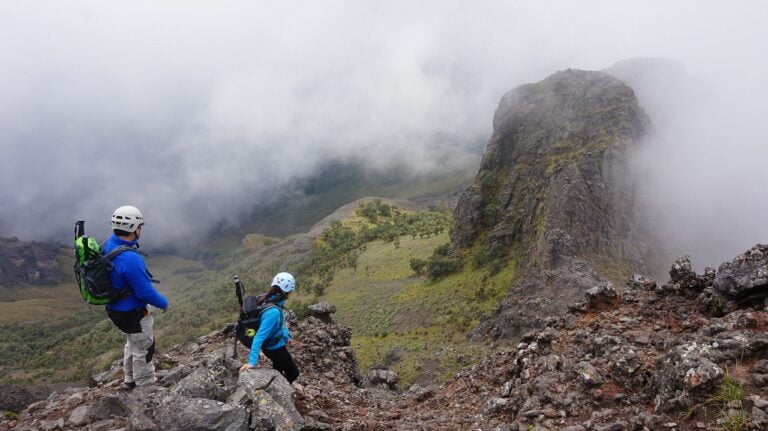What Are the Big 4 in Backpacking? (And Why Sleep Systems Matter)
The Big 4 in backpacking—your backpack, shelter, sleep system, and sleeping pad—represent 60-75% of your total base weight and determine whether you’ll carry a crushing 30-pound traditional setup or an efficient sub-10-pound ultralight configuration. Your sleep system matters most because inadequate insulation increases hypothermia risks while poor R-value pads (rated 1-8) compromise ground insulation, directly impacting sleep quality and next-day performance. Mastering these four categories reveals significant weight reduction strategies that transform your hiking experience.
We are supported by our audience. When you purchase through links on our site, we may earn an affiliate commission, at no extra cost for you. Learn more. Last update on 10th December 2025 / Images from Amazon Product Advertising API.
Notable Insights
- The Big 4 backpacking gear categories are backpack, shelter, sleep system, and sleeping pad, comprising 60-75% of total base weight.
- Sleep systems are critical for preventing hypothermia and ensuring quality rest, requiring temperature ratings 10-15 degrees below expected conditions.
- Proper sleeping pad R-values (1-8 rating) provide essential ground insulation and significantly impact overall sleep system performance and safety.
- Traditional Big 4 setups weigh 15-30 pounds while ultralight configurations achieve under 10 pounds through material and design optimization.
- Sleep system failures increase hypothermia risks and decrease performance, making proper insulation selection vital for backcountry safety.
Understanding the Big 4 Framework and Its Impact on Backpacking
When you’re planning a backpacking trip, the Big 4 framework represents the four heaviest gear categories that’ll dominate your pack weight: backpack, shelter, sleeping bag or quilt, and sleeping pad.
These items typically constitute 60-75% of your total base weight. Your gear selection directly impacts endurance and hiking performance.
Traditional setups often weigh 15-30 pounds, while ultralight configurations drop below 10 pounds total. Each pound reduction translates to measurably less fatigue over long distances.
Sleep systems demand particular attention since they affect safety and recovery. Insufficient insulation creates hypothermia risks and poor rest quality.
Proper packing techniques maximize space efficiency, while gear durability guarantees reliable performance across multiple seasons.
Focus your weight-reduction efforts here first—you’ll achieve the most significant improvements in pack weight and overall hiking experience.
When selecting sleeping pads specifically, consider the R-value rating for your expected conditions, with R-2 suitable for summer camping and R-4+ necessary for winter expeditions.
Backpack Selection: Choosing Your Gear-Carrying Foundation

Material durability proves critical in rugged environments.
High-strength fabrics like ripstop nylon resist abrasions while maintaining lightweight construction.
Water-resistant coatings protect contents from moisture exposure.
Shelter Systems: Protecting Yourself From Weather and Elements
After securing your pack, shelter selection becomes your next critical decision in the Big 4 hierarchy. Your shelter system directly impacts sleep quality and safety in harsh conditions.
Double-wall tents offer superior weather resilience through rainfly protection and breathable inner walls that prevent condensation. Single-wall designs reduce weight but sacrifice ventilation. Ultralight options like pyramid tents and shaped tarps provide excellent setup efficiency while maintaining weather protection.
Consider your environment when choosing insulation materials and ventilation systems. Bug protection becomes essential in mosquito-heavy regions, while alpine conditions demand robust wind resistance.
Tarp shelters work well for experienced hikers seeking minimal weight, but beginners benefit from structured tent designs. Setup efficiency matters during storms.
Practice your shelter assembly at home before hitting the trail. Your ground insulation choice significantly affects thermal performance, with sleeping pads offering R-values ranging from 1-8 for superior heat retention in cold conditions.
Sleep Systems: Breaking Down Sleeping Bags, Quilts, and Pads
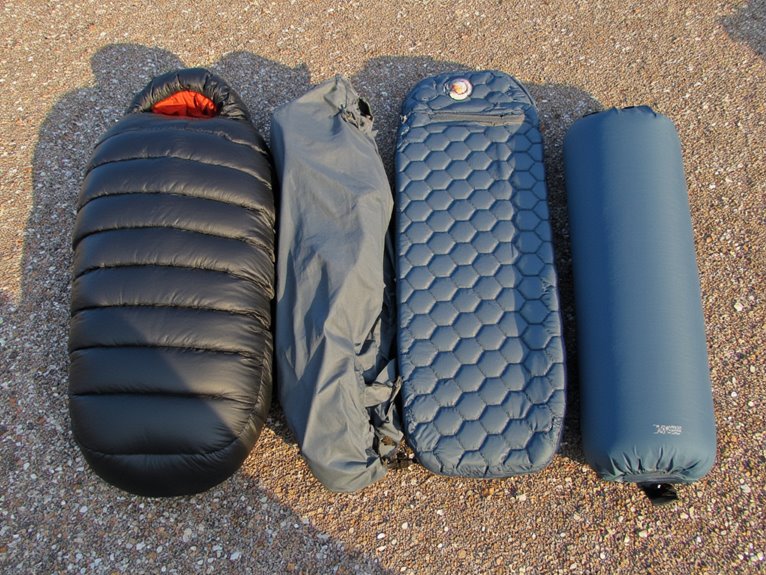
Your shelter protects you from external threats, but your sleep system determines whether you’ll wake up refreshed or miserable after a cold, sleepless night.
Sleep systems comprise three critical components: insulation, sleeping pads, and integration strategies.
Sleeping bags offer complete thermal protection through down or synthetic insulation. Key sleeping bag features include temperature ratings, mummy or rectangular shapes, and draft collars that prevent heat loss. Down provides superior warmth-to-weight ratios but fails when wet.
Quilts present compelling quilt advantages for ultralight backpackers. They’re lighter and more compressible than traditional bags while offering better airflow regulation. However, quilts require compatible sleeping pads since they lack bottom insulation.
Sleeping pads provide ground insulation through R-value ratings. Air pads offer maximum comfort but risk punctures. Self-inflating pads balance performance and durability. Closed-cell foam pads excel in rugged conditions despite bulk.
When selecting sleeping bags, choose a temperature rating 10-15 degrees lower than expected conditions to ensure comfort during sleep.
Optimizing Big 4 Choices for Weight Savings and Performance
When targeting significant weight reductions, focus on your heaviest Big 4 items first since each ounce saved here delivers maximum impact on overall pack weight.
Your backpack typically weighs 2-4 pounds, making it prime for enhancement through ultralight fabrics like Dyneema and frameless designs.
Ultralight backpacks using Dyneema fabric and frameless construction can slash 1-2 pounds from your traditional pack weight.
Gear innovation drives modern weight management strategies across all categories.
Shelters benefit from tarp-and-bivy combinations that cut weight by 40-60% compared to traditional tents.
Sleep systems offer the greatest flexibility—quilts eliminate unnecessary back insulation, saving 4-8 ounces while maintaining warmth ratings.
Consider seasonal adjustments for peak performance ratios.
Summer configurations allow lighter materials and reduced insulation ratings.
Don’t overlook accessories like titanium stakes and silnylon stuff sacks, which collectively save several ounces.
Total base weight reductions of 3-5 pounds are achievable through systematic Big 4 enhancement.
Sleeping pad thickness of 4-5 inches provides optimal support while maintaining reasonable weight for ultralight configurations.


